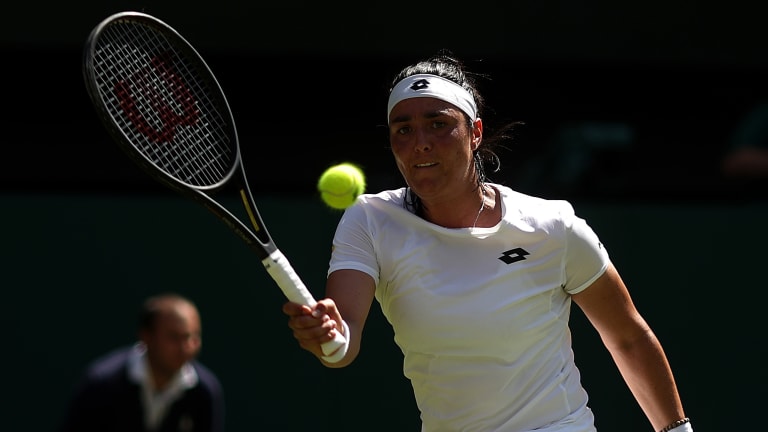Instruction
Weapon Wednesday: Alcaraz, Jabeur surprise and disguise with the drop shot
By Aug 24, 2022Instruction
Court of Appeals: Water Break
By May 20, 2023Instruction
Toni Nadal: With improved backhand, Casper Ruud "can be No. 1"
By Nov 21, 2022Instruction
Quick Tip: Add a rocking motion to the start of your serve
By Nov 16, 2022Instruction
Tennis Channel Academy: Rectifying Road Rage
By Oct 13, 2022Instruction
Tennis Channel Academy: Is the Lesson Model Broken?
By Oct 12, 2022Instruction
Breaking The Rules: Time to abandon the net touch?
By Oct 11, 2022Instruction
Mission Transition: How to bring your game from baseline to net (Part 3 of 3)
By Oct 03, 2022Instruction
Mission Transition: How to bring your game from baseline to net (Part 2 of 3)
By Oct 03, 2022Instruction
What can be applied from Carlos Alcaraz, Casper Ruud to your game? How to enjoy the competitive process
By Sep 12, 2022Weapon Wednesday: Alcaraz, Jabeur surprise and disguise with the drop shot
With the pair proving its worth in the pros, the pace-changing ploy is a clever way to capture a point—if you know how to hit it, and when to do it.
Published Aug 24, 2022
Advertising

“I’m gonna play my game,” Jabeur said before her Wimbledon semifinal against Tatjana Maria. “I know I can be aggressive. I can slice, I can change the rhythm. I know on my legs I have to be really ready for the, really, those balls. It’s not easy.” The Tunisian just makes her jaw-dropping blend of shots look so.
© 2022 Getty Images